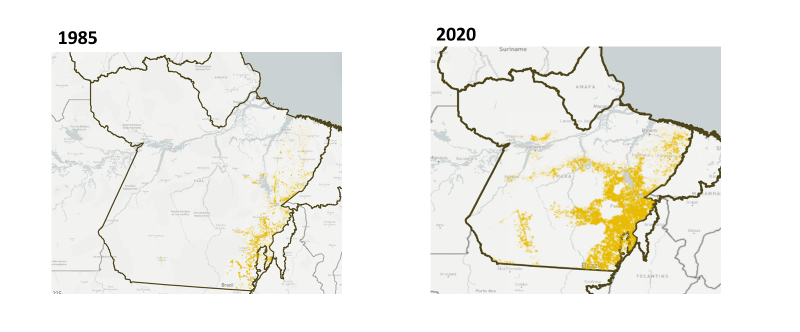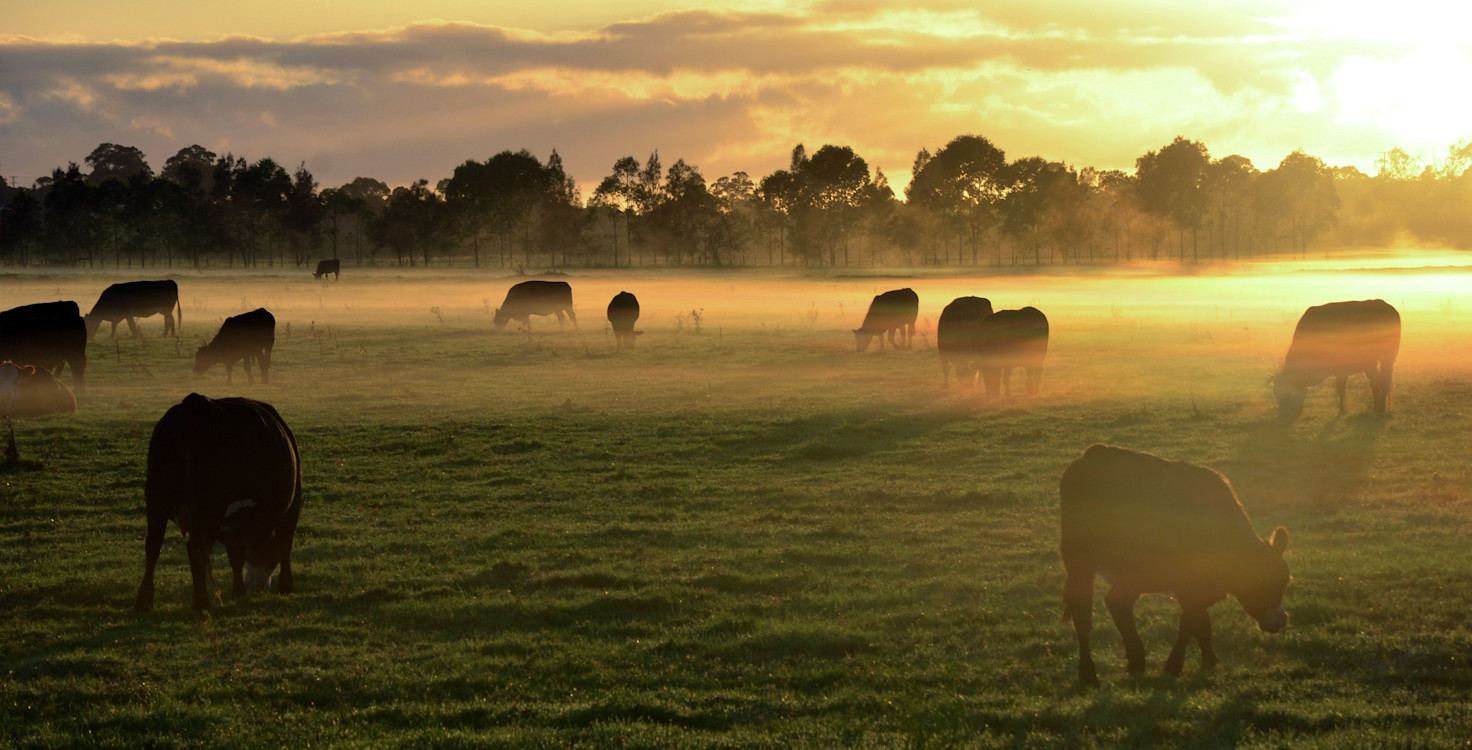Today, the world celebrates Earth Day. It was first celebrated in 1970, triggered by a mass protest in the United States in the face of rising environmental concerns. Fifty years later, we are now more aware than ever of the catastrophic impacts of taking the earth for granted. Each year, this day serves as a reminder to judiciously use the limited resources of our planet.
Land is a scarce resource that constitutes only about 30% of the earth’s surface. However, its importance in our lives is unquestionable. The overuse and malmanagement of land resources have serious implications for the climate. The IPCC Special Report on Land and Climate states that grazing lands are responsible for more than half of agricultural emissions. Our research, however, indicates that in the livestock sector, leading meat companies often claim that their cattle are grazed on pasturelands and as a result, their supply chain is more sustainable compared to factory farming systems. Earth Day, therefore, presents a great opportunity to clarify this misconception about pasturelands. The root of this matter is that the net impact of a pasture in mitigating emissions depends on the underlying land-use change as well as the pasture quality. Unless these factors are explained and accounted for in calculating emissions, sustainability claims about pasturelands lack credibility.
Clearing the misconception that pasturelands are always better for the climate
This misconception has deep roots, primarily due to the variety of literature that supports conflicting points of view. For example, in a report by Greener World, authors use a literature review to argue that pasture-based livestock production is sustainable due to the positive impact on climate through carbon sequestration. However, authors of a similar report by [Food Climate Research Network] argue against the positive effects. They highlight that carbon sequestration from pasture-based livestock production systems comprises only about 4 to 11%, which is not enough to compensate for the major share of emissions stemming from cattle through enteric fermentation.
Given the existence of literature on both sides of the argument, it is therefore tempting to cherry-pick the narrative and use it to justify the choice of practices. However, the devil lies in the details. This ambiguity stresses the need to consider other factors when assessing the environmental impact of pasture-based livestock farming.
Emissions from the livestock sector come from carbon, nitrogen, and methane released during various stages of rearing cattle. The extent to which these gases are released in turn depends on several site-specific factors, such as the fibre content of forage, the way livestock waste is managed, and the number of cows grazing on a given pastureland. These vary from site to site, making a blanket claim about the mitigation potential of pasturelands impossible.
Not all land types can be viewed in the same way for climate mitigation
IPCC, in its Good Practise Guidance for Land Use, Land-Use Change and Forestry, categorises land use into 6 categories:
Forest land;
Cropland;
Grassland;
Wetland;
Settlements;
Other lands.
These provide a rough ranking in terms of carbon storage potential, with forests being the most effective and settlements the least.
Forests store carbon not only in aboveground biomass but also in soil. Around 20-25% of the CO2 released by humans into the atmosphere is currently being absorbed by plants. The denser the vegetation on land, the better its sequestration potential.
Afforestation refers to the practice of planting trees in lands that have long been cleared of forests in order to create pasturelands, croplands and for other agricultural land uses. It has the potential to sequester 2.2-9.5 metric tonnes of CO2 per acre per year, consequently presenting the most effective way to improve the mitigation potential of a given pastureland. This is much higher compared to well managed pastures which can sequester only about 0.1-1.9 metric tonnes of CO2 per acre per year. Moreover, by modelling future scenarios of expanding pasturelands through deforestation, researchers have demonstrated that it could result in a significant increase in methane emissions by the middle of the century. The recently released IPCC mitigation report shows that in future pathways that reach global net zero greenhouse gas emissions by 2050, mitigation action in AFOLU (Agriculture, Forestry and Other Land Use) sector, such as afforestation, can deliver large scale emission reduction.
Among all forests of the world, the Amazon biome of Brazil has the highest carbon sequestration potential given the tree types and the density of its forests. Unfortunately, it is also one of the most deforested regions in the world. Through geospatial maps, Atlas of Pasturelands demonstrates the increase in pastureland in Brazil. The map below shows this expansion in the Para region of the Amazonia biome over 15 years. Based on the data provided by the TRASE supply chain, five large meat companies, namely JBS, Mercurio Alimentos, Frigol, Xinguara Industria, and E Commercio, account for a major share of beef exports from this state.
The Coller FAIRR Protein Producer Index 2021/22 indicates that although companies have improved their performance score against the deforestation risk factor, full traceability of beef supply chains continues to be a sticky issue, as the existence of legal loopholes allows cattle from deforested lands to be traded illegally with less difficulty.

Source: Atlas das Pastagens
The quality of pastures cannot be ignored
Indeed, sometimes pastures can be carbon sinks. However, that depends on how well they are managed. In the IPCC terminology, pastures fall in the category of grasslands. Land types in this category sequester carbon because of the various species of annual and perennial grasses that grow on them and add carbon to the soil. Due to overgrazing, the grass density is reduced and the quality of the pasture deteriorates. According to one estimate, almost 60% of total pasturelands in Brazil were degraded by 2018, meaning that their ability to absorb carbon is minimal. Remediating degraded pasturelands can cost Brazil up to $970 per hectare.
Unlike other emerging economies, the nation’s AFOLU sector accounts for a major share of the national greenhouse gas emissions. In India, for example, the energy sector is the largest contributor to emissions. This situation prompted the Brazilian government to commit to restoring 15 million hectares of degraded pastureland, as part of its emission reduction target in Nationally Determined Contributions.
Despite the above, companies in the beef supply chains are not doing enough to improve degraded pasturelands. While deforestation is often reported in CDP disclosures, companies do not disclose the quality of pastures from where the cattle are sourced nor do they disclose the steps that they are taking to restore those areas. Difficulties in defining and setting out quality standards for a resource of this kind could be one of the reasons for this. The bigger picture in Brazil represents a major contradiction due to the national commitment to restoring degraded pastures on the one hand and the lack of corporate disclosure or reporting on the other.
With extreme temperatures becoming the norm due to global warming, the quality of pastures can be expected to deteriorate further. The Coller FAIRR Climate Risk Tool shows that the profitability of some of the biggest meat companies can fall by a quarter to almost half of their current earnings if these companies fail to take the risks of climate change into account by 2050.
Asking tougher questions will accelerate action
So when meat companies claim their cows come from pasturelands and are therefore good for the climate, we should be asking them tougher questions, such as:
What was the land-use change of these pasturelands?
Have you set targets to address cattle sourced from degraded pastures?
What measures are you taking to restore the degraded pastures from where your cattle are sourced?
To elevate the position of pastureland for mitigation, those are the real questions that need answers.
FAIRR insights are written by FAIRR team members and occasionally co-authored with guest contributors. The authors write in their individual capacity and do not necessarily represent the FAIRR view.
